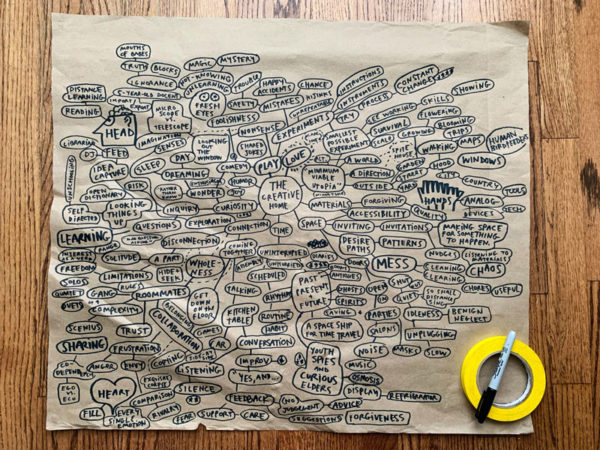Sometimes success is not about whether an initiative continues to have a meaningful impact or falls on the wayside, rather it is about whether we learn from our failures, whether we reflect on what worked and what we could improve in the future. Just as learning is a lifelong goal, so to should success be. Instead of considering it as something achievable and able to be quantified, I believe that it is best considered as a target, an ideal to which we aim and aspire. Actually hitting the target is only one part of the goal, what is just as important is what that target is and how we go about trying to hit it.
Month: November 2021
Here are three (free) online sites powered by algorithms that I found and tinkered with. I am going to use the paragraph I just wrote as the intro I just wrote to this post as the text that I want each site to turn into music (See words above). Each of the sites will use the same exact text.
It is also interesting to consider how AI can produce manuscripts. I can imagine a younger me using this to generate compositions to . I probably would have claimed them as my own, rather than being hampered by writing in a language not foreign to a budding rock guitarist.
Modern PHP Cheat Sheet from the book Front Line PHP
Dividing the world into vaccine haves and have-nots is like dividing a swimming pool so it has a “pissing end” and a “no pissing” end. We’re still all in the same pool. Humanity has a shared epidemiological destiny
Books that give insights into an artform that is so aligned with our culture and identity
TAoN No. 90: Six ways to escape algorithmic attention patterns by engaging with, you know, reality. Plus: A new icebreaker, and more
The other day my wife and I went and visited her grandparents. As is the usual, I ended up chatting with her grandfather about anything and everything. I love these conversations as no matter how many chats we have, for I always learn something new from him about such topics as farming, fire fighting and the family history. Whether it be about communicating during a fire or the way that the various properties were divided. Although many of these situations do not impact me directly, the problem solving and reasoning behind them does. Solutions for today can so often be found in adapting and extending ideas from the past.
Google Forms makes it relatively easy to add such advanced date validation rules to individual fields through Regular Expressions (or regex or regexp). Think of them as search patterns and every character entered in a form field is matched against that pattern – the form can only be submitted if the patter and the user-input matches.
Social annotation (SA) is a genre of learning technology that enables the annotation of digital resources for information sharing, social interaction and knowledge production. This study aims to examine the perceived value of SA as contributing to learning in multiple undergraduate courses.,In total, 59 students in 3 upper-level undergraduate courses at a Canadian university participated in SA-enabled learning activities during the winter 2019 semester. A survey was administered to measure how SA contributed to students’ perceptions of learning and sense of community.,A majority of students reported that SA supported their learning despite differences in course subject, how SA was incorporated and encouraged and how widely SA was used during course activities. While findings of the perceived value of SA as contributing to the course community were mixed, students reported that peer annotations aided comprehension of course content, confirmation of ideas and engagement with diverse perspectives.,Studies about the relationships among SA, learning and student perception should continue to engage learners from multiple courses and from multiple disciplines, with indicators of perception measured using reliable instrumentation.,Researchers and faculty should carefully consider how the technical, instructional and social aspects of SA may be used to enable course-specific, personal and peer-supported learning.,This study found a greater variance in how undergraduate students perceived SA as contributing to the course community. Most students also perceived their own and peer annotations as productively contributing to learning. This study offers a more complete view of social factors that affect how SA is perceived by undergraduate students.
Histomap, published by Rand McNally in 1931, is an ambitious attempt at fitting a mountain of historical information onto a five-foot-long poster. The poster cost $1 at the time, which would equal approximately $18 when accounting for inflation.
John Spark’s creation is an admirable attempt at making history more approachable and entertaining. Today, we have seemingly limitless access to information, but in the 1930s an all encompassing timeline of history would have been incredibly useful and groundbreaking. Indeed, the map’s publisher characterized the piece as a useful tool for examining the correlation between different empires during points in history.
Thread by @mathesonrussell: I teach an undergrad course at the University of Auckland on power. For those interested, here’s a rundown of what’s in it and the core readings for students. 🧵 Power for an individual,……
The examination of a PhD thesis marks an important stage in the PhD student journey. Here, the student’s research, thinking and writing are assessed by experts in their field. Yet, in the early stages of candidature, students often do not know what is expected of their thesis, nor what examiners will scrutinise and comment on. However, what examiners look for, expect and comment on has been the subject of recent research. This article synthesises the literature on examiner expectations into a framework and tool that can assist students to understand PhD thesis examination expectations. Suggestions of how this tool may be used as part of a broader supervision pedagogy are offered.
A post about how I make mind maps.
This introductory guide to design thinking for educators lays the foundations for better problem solving and creative ideas.



